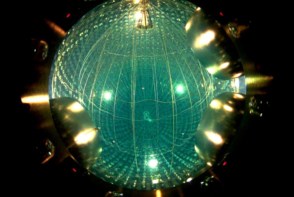Friction is a familiar effect that plays a central role in everyday life, but scientists have never fully understood it. Now two physicists have related the macroscopic forces involved in friction to the atoms of the surfaces in contact. Michael Marder and Eric Gerde of the University of Texas at Austin believe their model could describe frictional effects in systems that range in size from nanomachines to the Earth's crust (E Gerde and M Marder 2001 Nature 413 285).
Over two hundred years ago, Amontons and Coulomb found that the force needed to push an object across a surface depends on the mass of the object, but does not appear to depend on the area in contact with the surface. Microscopic bumps – or ‘asperities’ – on the surfaces have traditionally been blamed for these effects. The asperities make the true contact area much smaller than it seems, and also difficult to measure. The mass of the object creates pressure at the interface and compresses the asperities, increasing this contact area.
To reach a better understanding of how microscopic effects determine macroscopic behaviour, Marder and Gerde extended an existing theory that describes how cracks arise and propagate in other materials. They found that ‘micro-cracks’ – similar to dislocations in crystalline materials – emerge in the lattice structure of the materials at the boundary between two surfaces. Although these cracks seem to move – like wrinkles in a rug – as the object is pushed along, the back edge of each crack actually ‘heals’ while the front edge grows. Like the ridges in a rug, the micro-cracks reduce the contact area between the surfaces and make it easier for them to slide across each other.
The atom-level simulation also confirmed that the force needed to slide one object over another is proportional to the compressive force at the boundary, which is determined by the mass of the object on top. This relationship was also described by the earlier theory based on asperities.
Micro-cracks could even solve a long-standing geophysical puzzle, according to Marder and Gerde. If micro-cracks existed between tectonic plates, they would reduce the contact area and explain why earthquakes generate much less heat than calculations predict.
Marder also speculates that the theory could have implications at the other end of the scale: “It may help us to understand frictional sliding in nanomachines”, he told PhysicsWeb. “Non-destructive sliding is highly desirable and our mechanism for friction produces no wear.”



